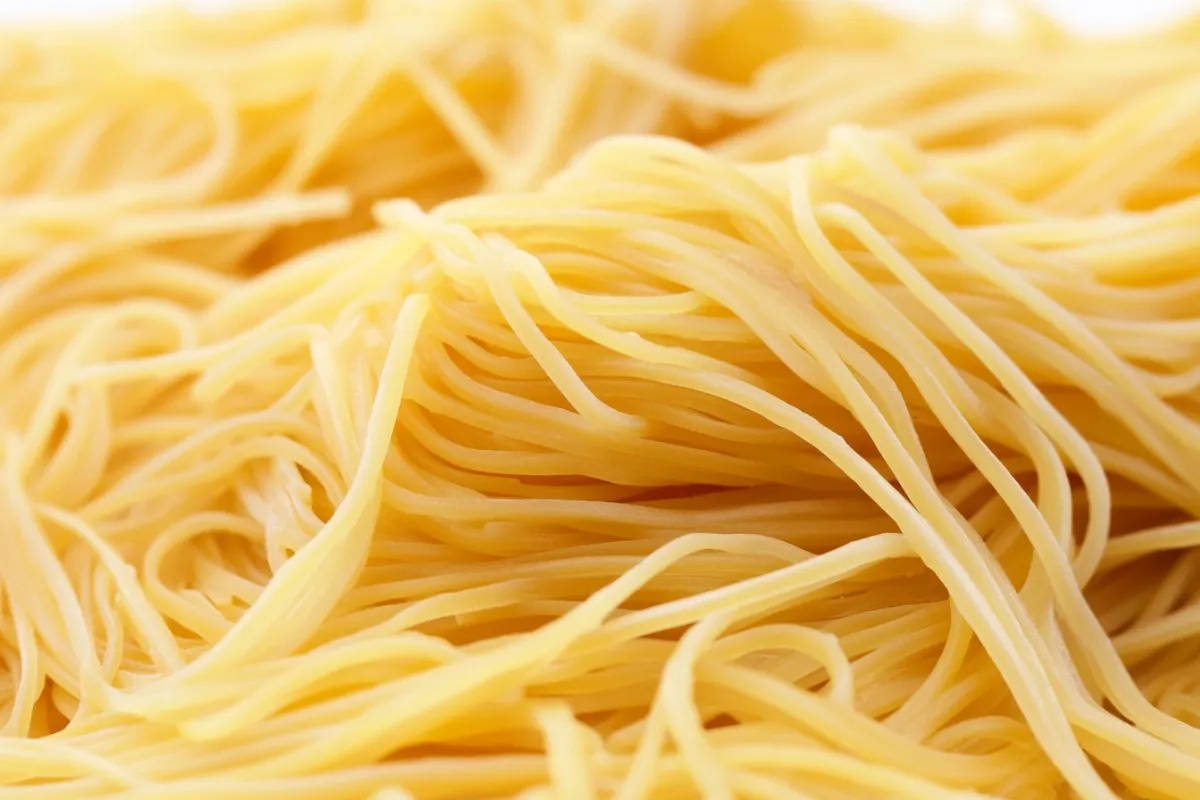What Does Capellini Mean in Italian?
When we think of Italian cuisine, one of the first things that comes to mind is pasta. Whether served with rich sauces or simple olive oil, pasta has become a symbol of Italian culinary culture. Among the many varieties of pasta, capellini stands out for its thin, delicate strands that resemble fine hair. But what does capellini mean in Italian? And how has it gained its status in Italian cuisine and beyond?
In this comprehensive article, we’ll explore the origins of the word capellini, its cultural significance in Italy, and how it fits into the larger world of pasta. We’ll also discuss its uses in both traditional and modern cooking, compare it with similar pastas, and offer cooking tips for the perfect bowl of capellini.
The Meaning of Capellini in Italian
The word capellini is derived from the Italian word capelli, which translates to “hair.” The suffix -ini indicates a diminutive form, so capellini literally means “little hairs.” This aptly describes the appearance of the pasta—long, thin strands that are finer than spaghetti but slightly thicker than angel hair pasta.
In Italy, the term capelli (hair) is often used to describe anything thin and delicate, from fabrics to pasta. Thus, the name capellini conveys both the texture and the visual appeal of the pasta. The delicate, hair-like strands make it ideal for light sauces that don’t overpower its fine texture.
If you’re interested in how this pasta compares to similar types, Is Capellini the Same as Angel Hair? offers a detailed comparison between capellini and angel hair.
Historical and Linguistic Origins of Capellini
The history of capellini dates back centuries, as pasta itself has been a staple in Italy since ancient Roman times. Over time, Italians developed countless shapes and sizes of pasta, each suited to different types of dishes and regional specialties. Capellini emerged as a popular choice in regions where light, fresh ingredients were favored, such as coastal areas where seafood was abundant.
Capellini and Italian Linguistics
Linguistically, the word capelli has Latin roots, as it is derived from capillus, the Latin word for hair. The diminutive -ini suffix emphasizes the pasta’s fine nature. Italian cuisine has a long tradition of naming pasta shapes based on their appearance, and capellini is no exception.
The fine, thin strands of capellini closely resemble hair, which is how it earned its name. Other pasta types, such as spaghetti (meaning “little twine”) and linguine (meaning “little tongues”), follow a similar pattern of naming based on physical characteristics.
To dive deeper into the history of Italian pasta and its varied forms, you can explore more in the Ultimate Guide to Capellini Pasta.
Traditional Uses of Capellini in Italian Cuisine
In Italian cuisine, capellini has long been associated with simple, fresh dishes that highlight the natural flavors of high-quality ingredients. Unlike heavier pastas like fettuccine or penne, capellini is best suited to light, olive oil-based sauces or simple tomato sauces. Its fine structure allows it to absorb these sauces quickly without becoming too heavy.
Classic Capellini Dishes
- Capellini Aglio e Olio: This is one of the simplest and most beloved dishes made with capellini. It features just garlic, olive oil, and red pepper flakes, allowing the delicate texture of the pasta to shine through. The dish is quick to prepare and relies on fresh, high-quality ingredients.
- Capellini al Pomodoro: In this dish, capellini is paired with a fresh tomato sauce made from ripe tomatoes, garlic, and basil. The simplicity of the dish allows the pasta to take center stage, and the light sauce complements its thin strands.
- Capellini alle Vongole: A seafood-based dish that combines capellini with clams, white wine, garlic, and parsley. The light, broth-like sauce pairs perfectly with the fine strands of pasta, making this dish a favorite in coastal regions of Italy.
These traditional dishes showcase how capellini is often used in recipes that emphasize freshness and simplicity. Its quick cooking time also makes it a popular choice for home cooks looking to prepare meals in a hurry.
Capellini vs Angel Hair Pasta: A Detailed Comparison
While capellini and angel hair pasta are similar in appearance, there are subtle differences that distinguish the two. Both pastas are fine and thin, but capellini is slightly thicker than angel hair (known as capelli d’angelo in Italian). This difference in thickness, though minimal, can affect how the pastas perform in various dishes.
Key Differences Between Capellini and Angel Hair
- Thickness: Capellini measures approximately 0.85 mm to 0.92 mm in diameter, whereas angel hair is typically thinner, usually under 0.85 mm. This small difference gives capellini a slightly firmer texture when cooked.
- Usage: Due to its slight thickness, capellini is better suited for dishes with slightly thicker sauces or ingredients, such as seafood or finely chopped vegetables. Angel hair, on the other hand, is often used in very light dishes, such as those with oil-based or broth-like sauces.
For a deeper exploration of the differences between these two types of pasta, visit Capellini vs Vermicelli: Differences and Uses.
Modern Adaptations and Global Influence of Capellini
Over time, capellini has gained popularity far beyond Italy, becoming a favorite in kitchens around the world. Chefs and home cooks alike appreciate its delicate texture and quick cooking time, which make it a versatile ingredient in a wide range of dishes.
Capellini in Global Cuisine
In many countries, capellini has been adapted into fusion dishes that combine Italian culinary techniques with local flavors. For example:
- In Asian cuisine, capellini is sometimes used as a substitute for rice noodles in stir-fries or soups. Its light, delicate strands pair well with the fresh vegetables and flavorful broths often found in Asian cooking.
- In Mediterranean cuisine, capellini is often served in cold salads with fresh herbs, olives, and feta cheese. Its quick cooking time makes it a convenient choice for these light, refreshing dishes.
Capellini in Contemporary Western Cooking
In Western kitchens, capellini has found a home in health-conscious cooking. Its low calorie count and ability to pair well with vegetables and lean proteins make it an excellent choice for those looking to create light, nutritious meals. For example, capellini is often featured in dishes that use minimal ingredients, such as garlic, lemon, and olive oil, allowing the pasta itself to be the star of the dish.
For more inspiration on how to incorporate capellini into your modern dishes, check out the Ultimate Guide to Capellini Pasta.
Cooking Tips for Capellini
Given its fine nature, cooking capellini requires a delicate touch. While it cooks very quickly, it is also prone to overcooking, which can result in a mushy texture. To achieve the perfect al dente texture, follow these simple tips:
Tips for Cooking Capellini Perfectly
- Use ample water: Since capellini is so thin, it needs enough room to move around freely in the pot. Using plenty of water will help prevent the strands from sticking together.
- Boil for 2-3 minutes: Capellini cooks in just 2-3 minutes, so it’s essential to keep a close eye on it. Overcooking even by a minute can lead to a loss of texture.
- Toss immediately with sauce: Once drained, capellini should be tossed immediately with sauce to prevent it from clumping together. This also allows the sauce to coat the pasta evenly.
Nutritional Value and Health Benefits of Capellini
For those looking for a pasta that’s both delicious and nutritious, capellini is an excellent choice. Like most types of pasta, it is rich in carbohydrates, making it a great source of energy. However, its lightness and low-calorie content make it ideal for those seeking a lighter meal option.
Nutritional Breakdown
A typical serving of capellini (about 2 ounces) contains:
- Calories: Approximately 200 calories
- Carbohydrates: 40 grams
- Protein: 7 grams
- Fiber: 2 grams (if whole wheat)
Health Benefits
- Low in calories: Compared to other types of pasta, capellini is lower in calories due to its fine, light structure. This makes it an ideal choice for those watching their calorie intake.
- Quick energy source: The carbohydrates in capellini provide a quick source of energy, making it a great option for athletes or those looking to fuel up before physical activity.
- Gluten-free options: For those with gluten intolerance, there are gluten-free versions of capellini made from rice or corn flour, allowing everyone to enjoy this delicious pasta.
Frequently Asked Questions (FAQ)
1. What does capellini mean in Italian?
In Italian, capellini means “little hairs,” a reference to the pasta’s fine, delicate strands.
2. Is capellini the same as angel hair pasta?
While similar, capellini is slightly thicker than angel hair pasta. You can learn more about this difference in our Capellini vs Angel Hair article.
3. What are some popular capellini dishes?
Popular capellini dishes include Capellini Aglio e Olio (garlic and olive oil), Capellini al Pomodoro (tomato and basil), and Capellini alle Vongole (clams and white wine sauce).
4. How do you cook capellini without it sticking together?
To prevent sticking, cook capellini in plenty of water, stir occasionally, and immediately toss it with sauce after draining.
5. Can you substitute capellini for spaghetti?
Yes, capellini can be substituted for spaghetti, but keep in mind that its finer texture may change the overall feel of the dish.
Conclusion
Capellini is more than just a type of pasta—it’s a culinary icon that has made its mark in both traditional Italian dishes and modern global cuisine. Whether served in a simple garlic and olive oil sauce or incorporated into contemporary fusion dishes, capellini offers endless possibilities in the kitchen. Its literal meaning, “little hairs,” perfectly encapsulates its delicate texture and fine strands.
To explore more about Italian cuisine and other pasta-related topics, check out our Ultimate Guide to Capellini Pasta.

